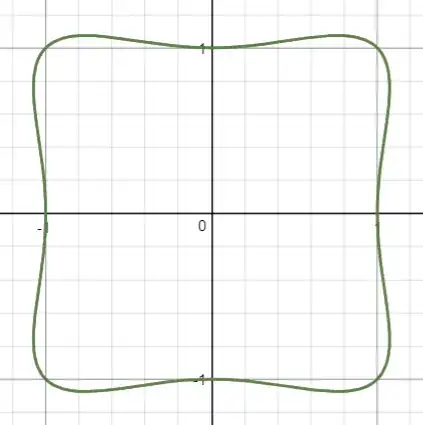You are right on the spot with the polar form. You need an area in polar coordinates, which is (quite obviously, from circle geometry):
$$A=\frac12\int_0^{2\pi} r^2\,d\phi$$
You have
$$r^4=\frac{1}{\cos^4 \phi-\cos^2\phi\sin^2\phi+\sin^4\phi}=\frac{1}{1-3\cos^2\phi\sin^2\phi}=\frac{1}{1-\frac{3}{4}\sin^2 2\phi}$$
$$r^2=\frac{1}{\sqrt{1-\frac{3}{4}\sin^2 2\phi}}$$
and finally
$$A=\frac12 \int_0^{2\pi} \frac{1}{\sqrt{1-\frac{3}{4}\sin^2 2\phi}}d\phi$$
This integral does not have a closed form in terms of algebraic and trigonometric functions, but can be put into Wolfram Alpha to calculate numerically (you get about 4.31). WA will express it with with a complete elliptic integral (one of the special functions that are not part of the "standard" set), but that's probably not that useful.
Maybe an explanation of the trig simplification:
$$1^2=(\cos^2\phi+\sin^2\phi)^2=\cos^4\phi+\sin^4\phi+2\cos^2\phi\sin^2\phi$$
From where both fourth power terms can be extracted with ease.
